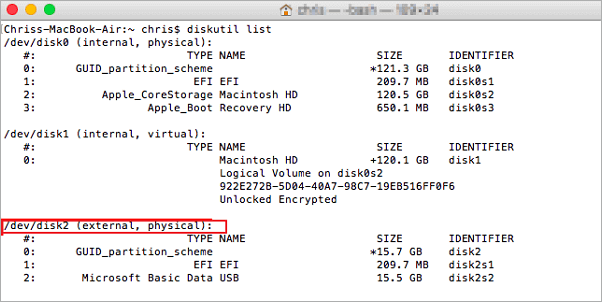

- #Completely for usb drive to fat16 on mac osx portable#
- #Completely for usb drive to fat16 on mac osx windows#
#Completely for usb drive to fat16 on mac osx windows#
Microsoft introduced a new file system, NTFS ("New Technology File System"), with the Windows NT platform in 1993, but FAT remained the standard for the home user until the introduction of the NT-based Windows XP in 2001. While FAT12 is used on floppy disks, FAT16 and FAT32 are typically found on the larger media.įAT was also used on hard disks throughout the DOS and Windows 9x eras.
#Completely for usb drive to fat16 on mac osx portable#
FAT is supported by portable devices such as PDAs, digital cameras, camcorders, media players, and mobile phones. FAT file systems are the default for removable media such as floppy disks, super-floppies, memory and flash memory cards or USB flash drives. Compatible file systems make it easier to exchange data between, for example, desktop computers and portable devices. The FAT file system has been used since 1977 for computers, and it is still frequently used in embedded systems. The successive major variants of the FAT format are named after the number of table element bits: 12 ( FAT12), 16 ( FAT16), and 32 ( FAT32).

Originally designed as an 8-bit file system, the maximum number of clusters must increase as disk drive capacity increases, and so the number of bits used to identify each cluster has grown. Even if only one byte of storage is needed to extend a file, an entire cluster must be allocated to it, so large clusters waste much disk space if there are large numbers of small files. The maximum size of a file or a disk drive that can be accessed is the product of the largest number that can be stored in the entries (less a few values reserved to indicate unallocated space or the end of a list) and the size of the disk cluster. Sub-directories are implemented as special files containing the directory entries of their respective files.Įach entry in the FAT linked list is a fixed number of bits: 12, 16 or 32. The operating system can then traverse the FAT, looking up the cluster number of each successive part of the disk file as a cluster chain until the end of the file is reached. The root directory of the disk contains the number of the first cluster of each file in that directory. Each entry contains either the number of the next cluster in the file, or else a marker indicating the end of the file, unused disk space, or special reserved areas of the disk. The table is a linked list of entries for each cluster, a contiguous area of disk storage. The FAT is statically allocated at the time of formatting. The file system uses an index table stored on the device to identify chains of data storage areas associated with a file, the File Allocation Table ( FAT). Main article: Design of the FAT file system FAT is the standard file system for digital cameras per the DCF specification. įAT file systems are still commonly found on floppy disks, flash and other solid-state memory cards and modules (including USB flash drives), as well as many portable and embedded devices. The FAT standard has also been expanded in other ways while generally preserving backward compatibility with existing software.įAT is no longer the default file system for Microsoft Windows computers.

The increase in disk drives capacity required three major variants: FAT12, FAT16 and FAT32. It is often supported for compatibility reasons by current operating systems for personal computers and many mobile devices and embedded systems, allowing interchange of data between disparate systems. Originally developed in 1977 for use on floppy disks, it was adapted for use on hard disks and other devices. Read-only, Hidden, System, Volume, Directory, ArchiveįAT12/FAT16: File, directory and volume access rights for Read, Write, Execute, Delete only with DR-DOS, PalmDOS, Novell DOS, OpenDOS, FlexOS, 4680 OS, 4690 OS, Concurrent DOS, Multiuser DOS, System Manager, REAL/32 (Execute right only with FlexOS, 4680 OS, 4690 OS individual file / directory passwords not with FlexOS, 4680 OS, 4690 OS World/ Group/ Owner permission classes only with multiuser security loaded)įAT32: Partial, only with DR-DOS, REAL/ OSįAT12/FAT16: Per-volume, SuperStor, Stacker, DoubleSpace, DriveSpaceįile Allocation Table ( FAT) is a file system developed for personal computers. Modified date/time, creation date/time (DOS 7.0 and higher only), access date (only available with ACCDATE enabled), deletion date/time (only with DELWATCH 2) Microsoft, NCR, SCP, IBM, Compaq, Digital Research, Novell, CalderaĨ-bit FAT, FAT12, FAT16, FAT16B, FAT32, ExFAT, FATX, FAT+ġ977 ( 1977) with Standalone Disk BASIC-80Ĥ,294,967,295 bytes (4 GB – 1) with FAT16B and FAT32 Ĩ.3 filename, or 255 UCS-2 characters when using LFN For the main encyclopedia article, see Design of the FAT file system. This article is a non-technical introduction to the subject.


 0 kommentar(er)
0 kommentar(er)
